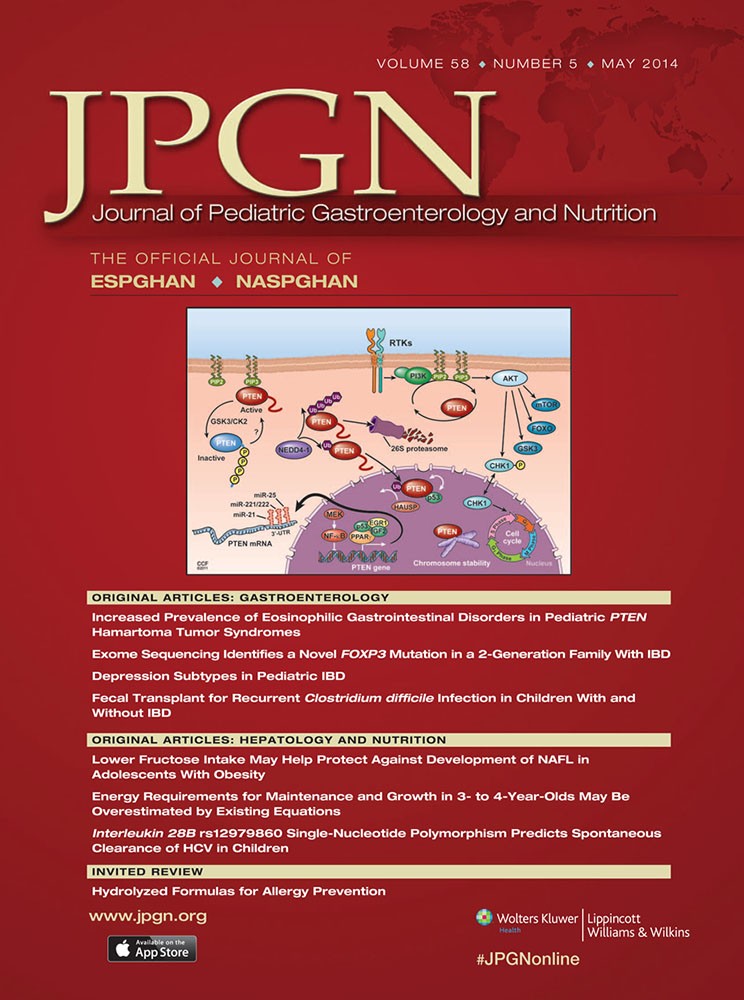Use of a Novel Laparoscopic Gastrostomy Technique in Children With Severe Epidermolysis Bullosa
The authors report no conflicts of interest.
ABSTRACT
Objective:
Supplementing nutrition in children with severe epidermolysis bullosa (EB) is challenging because of skin and mucosal fragility. Percutaneous endoscopic gastrostomy is contraindicated in EB, whereas more invasive open surgical gastrostomy placement can be complicated by chronic leakage. The aim of the study was to review the efficacy and acceptability, in children with severe EB, of our modified 2-port laparoscopic approach using the Seldinger technique with serial dilatation and tube insertion through a peel-away sheath.
Methods:
Retrospective review of children with EB who underwent laparoscopic feeding gastrostomy at our centre since 2009.
Results:
Seven children (6 severe generalised recessive dystrophic EB, 1 non-Herlitz junctional EB; 2 girls, 5 boys) underwent modified laparoscopic gastrostomy placement at median age 4.85 years (range 1.0–8.8), with fundoplication for gastro-oesophageal reflux in 1 case, with follow-up for 0.3 to 3.9 years. The procedure was well tolerated with oral feeds usually given after 4 hours and whole protein gastrostomy feeds within 24 hours in 6 patients. Improved growth was reflected in mean weight and height z scores: −1.36 (range −2.6 to 0.5) to −0.61 (range −2.34 to 2.0) and −1.09 (range −2.42 to 1.0) to 0.71 (range −1.86 to 1.0), respectively. Postoperatively, 5 patients experienced minor local complications: minimal leakage without skin damage in 3 and transient peristomal granulation rapidly responsive to topical treatment in 2; this followed acute gastrostomy site infection in 1. There was no leakage after the immediate postoperative period.
Conclusions:
We conclude that our less-invasive laparoscopic gastrostomy technique is effective and better tolerated in children with severe EB, at least in the medium term, than open gastrostomy placement. Longer follow-up is required.




